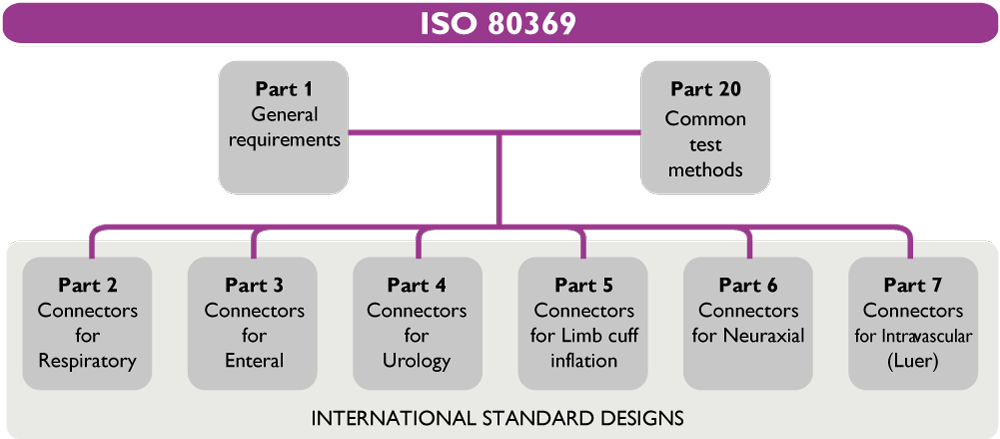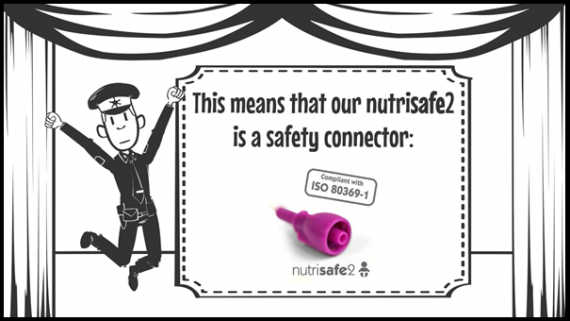"ISO 80369 : Small-bore connectors for liquids and gases in healthcare applications"
A patient may be connected, via catheters or tubes, to several delivery systems to receive parenteral medication, oxygen, enteral nutrition, anaesthesia, etc.
The ISO 80369 series of standards aims to avoid misconnection between two unrelated delivery systems (e.g. enteral syringe connected to an IV catheter), which can cause patient injuries or death.
To do so, ISO 80369 created unique international standard designs of connectors for each healthcare application (Respiratory, I.V., Enteral,…), which are non-interconnectable.

What about ISO80369-1?
ISO 80369-1 exposes the general requirements for small-bore connectors for liquids and gases in healthcare applications.
Nutrisafe2 is compliant with Part 1.
What about ISO 80369-3?
Part 3 is dedicated to connectors for the enteral application. In other words, it describes the ENFit connector.
Focus on neonatal patients in the Part 3
Part 3 also includes some specific paragraphs on the needs and concerns for neonatal patients:
Extract of ISO 80369-3 – Annex E – E.5 Generic user needs
“Preterm infants and sick newborns are probably the most important paediatric cohort of patients for whom enteral tube feeding is used in combination with the use of intravenous, airway devices and ventilators on a daily basis. Therefore, connections in this patient group are of ultimate importance.”
“The volume of the displacement when making a connection also matters. In a 500g newborn infant, enteral drugs are often prescribed in volumes as small as 0.1 ml or even 0.01 ml.”
Extract of ISO 80369-3 – Annex A – Subpopulations within the enteral clinical application
“Concerns have been raised about the possible risks of delivering inaccurate doses of medicines in certain clinical practices across high risk subpopulations (e.g. neonatal patients) if using a reversed connection system (female to male). This orientation can introduce inadvertent displacement of fluid originally contained within the […]” syringe tip.
“Laboratory testing also shows a mid-tolerance E1 [ENFit™] connector pair in a female to male orientation displaces a mean average of 0,148 ml (min 0,089 ml and max 0,179 ml with an n = 32) of fluid. “


